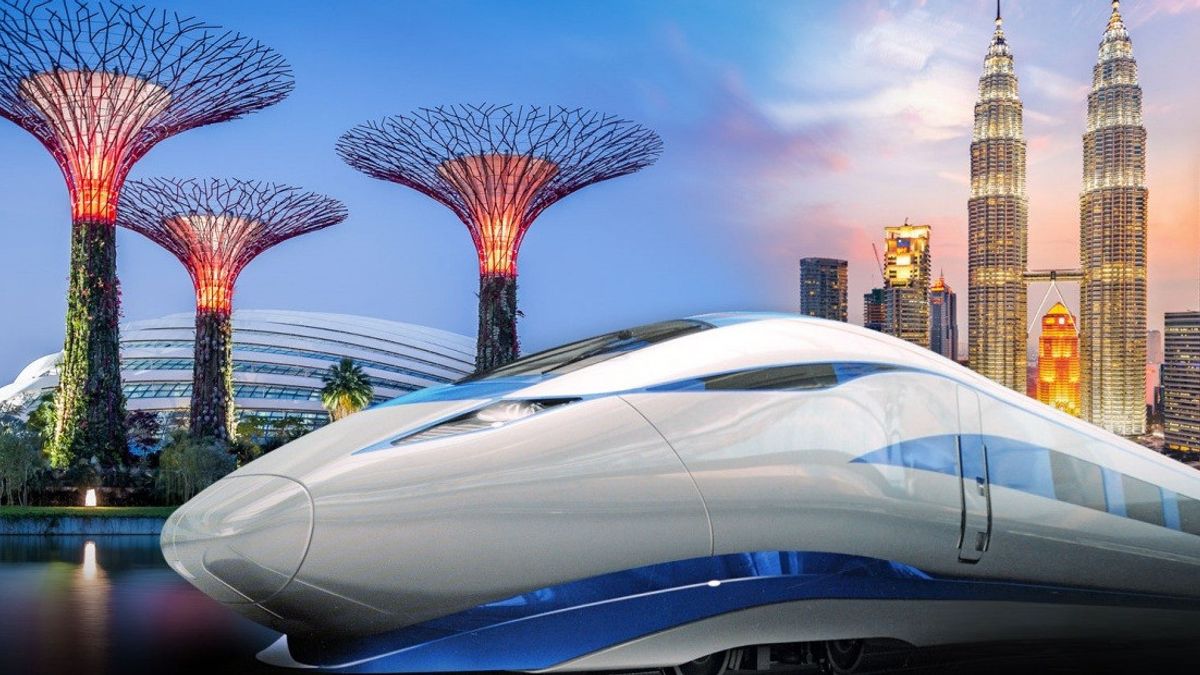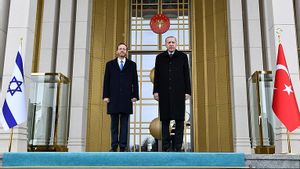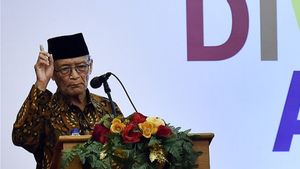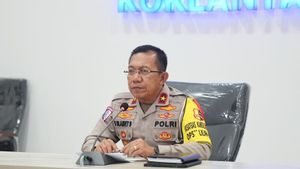JAKARTA - The progress of transportation is able to bring many benefits. From regional integration to economic improvement. Malaysia realized it. The neighboring country will soon perpetuate the Fast Train (KAC) project run in its country. High Speed Rail (HSR), his name.
The bullet train project is planned to connect Kuala Lumpur (Malaysia) to Jurong (Singapore). Malang cannot be rejected. Malaysia felt the investment brought big losses, rather than profit. As a result, the HSR project stalled.
The progress of transportation cannot be underestimated. The progress of transportation can be the spearhead of a country known as a great nation. The economy is increasing. Likewise the welfare of the people.
The Prime Minister of Malaysia, Najib Razak, was attracted. He wants Malaysia-Singapore to be connected to KAC. The pinnacle of being loved by scholars arrived. The HSR project was announced in September 2010. The project was even included by Najib Razak in the Economic Transformation Program.
A series of programs that can make Malaysia a big country. A country that has high income in Southeast Asia. The idea of HSR's project is considered by the Malaysian government to be mature.
The HSR project is predicted to pass through seven stations in Malaysia itself and the rest are stations in Singapore. Bandar Malaysia, Sepang-Putrajaya, Seremban, Melaka, Muar, Batu Pahat and Iskandar Puteri, before achieving their final destination in Jurong East, Singapore.
Najib Razak hopes that the cities traversed by the HSR project will receive great profits. This desire is based on the fact that KAC can cut the distance. If it is normal that the Kuala Lumpur-Jurong distance reaches more than four hours by private vehicle or bus, then with a KAC it only takes 90 minutes.
Singapore also supports the HSR Project. As a result, this big project was worked on by two countries at once: Malaysia and Singapore. However, Malaysia got a large portion in development. All because many Malaysian areas have been passed by KAC rather than Singapore.
VOIR éGALEMENT:
The Kuala Lumpur-Singapore KAC project is worth 17 billion US dollars. It is the largest KAC infrastructure project in Southeast Asia, which can bring about differences and reheat, both Malaysia-Singapore, and China-Japan relations. Recently, China has supplied billions of US dollars in investment to Malaysia and PM Najib Razak has provided 13 billion US dollars to China for a rail project that connects the Western and East Malaysian Peninsula.
While Singapore has problems with China today, because of its relationship with Taiwan and its stance on the islands at the LCS (South China Sea), which Beijing disputes with several ASEAN countries. Japan itself has a long history of its involvement in the construction and operation of KAC in Southeast Asia, and wants to reduce China's influence in the region," explained Poltak Partogi Nainggolan in China's book Indonesia and Rivalities, Japan, and India(2018).
Najib Razak's desire for Malaysia to have a KAC is second to none. Contributing votes related to the HSR Project are considered wind only. However, everything changed when Mahathir Mohamad replaced Razak as Malaysian PM in 2018.
Mahathir did not want to be careless. He tried to be rational. He and his ranks tried to recalculate KAC's investment. Mahathir also took a stand. Malaysian investment in connection with the HSR Project, whose crossing reached 218 miles or 350 kilometers, was considered detrimental, rather than profit.
The big project is considered to have injured Malaysia itself. This is because Malaysia itself has a large enough foreign debt. Even the project is considered not to have benefited Malaysia much. All because the construction of the rail track is perpetuated in Malaysia.
The option to postpone development was taken by Mahathir in September 2018. Like a ladder crash. This condition was later exacerbated by the presence of the COVID-19 pandemic which affected Malaysia and Singapore economically in early 2020.
The only option that makes the most sense for both countries is to cancel the HSR Project. Mahathir did not have time to stand alone to cancel the HSR Project, because he first resigned on February 24, 2020. Finally, the two countries then agreed to cancel the HSR Project in Kuala Lumpur on December 31, 2020.
Malaysia was represented by PM, Tan Sri Muhyiddin Yassin and Singapore represented by PM, Lee Hsien Loong. Therefore, Malaysia had to pay Singapore a lot of compensation. The compensation was to compensate Singapore for the costs in building infrastructure. Even the KAC that Najib Razak led ended in a stalled manner.
"The Malaysian and Singaporean governments want to convey developments regarding the HSR project, especially regarding the suspension period ending December 31, 2020. The two governments held several discussions regarding the change, but failed to reach an agreement. Therefore, the HSR agreement was canceled on December 31, 2020," Yassin said as quoted by Antara, January 1, 2021.
The English, Chinese, Japanese, Arabic, and French versions are automatically generated by the AI. So there may still be inaccuracies in translating, please always see Indonesian as our main language. (system supported by DigitalSiber.id)














